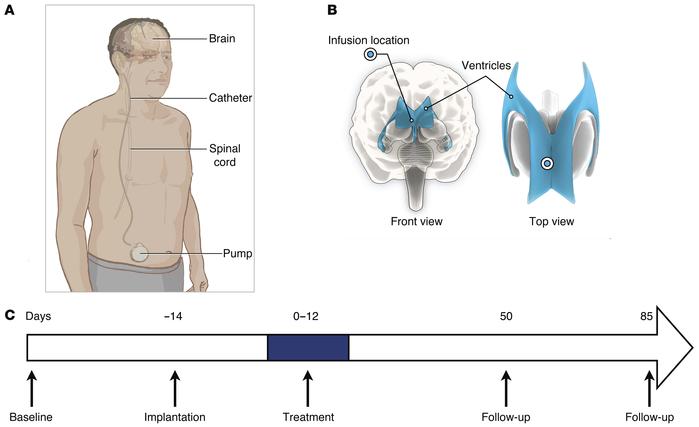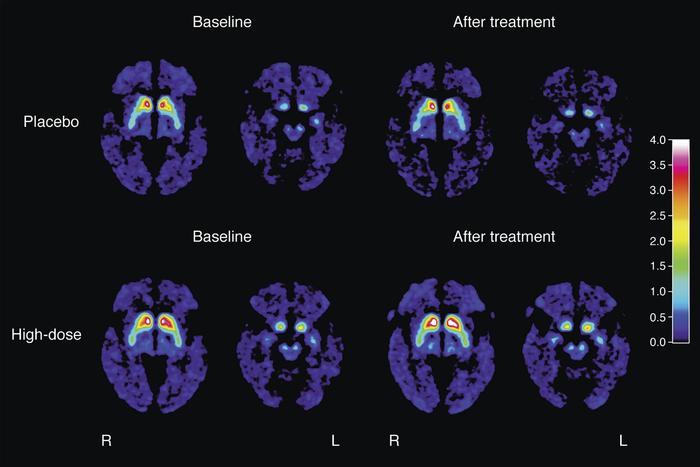Growth factor PDGF
Researchers at the University of Lund and the Karolinska Institute (both in Sweden) have tested the long-known nerve cell growth factor PDGF-BB (platelet-derived growth factor, type BB) for the first time in humans. In previous animal experiments, which have already begun about ten years ago, a decrease in Parkinson's symptoms and an increase in dopamine production and transport by PDGF-BB had been observed. In order to be able to verify the basic tolerability and efficacy of the growth factor in humans, a total of twelve Parkinsonian patients with moderate symptoms were treated with them, divided into three groups with different doses (0.2 and 1.5 and 5 mcg per day, respectively).

PDGF-BB is administered via a drug pump which is implanted in the abdominal cavity and transports the active substance from there via a so-called intracerebroventricular (icv) catheter into a specific region of the brain (monroforamen). This is necessary because the protein PDGF-BB could not otherwise pass the blood-brain barrier.
The growth factor was delivered over a total of twelve days. After approximately 85 days, the patients were examined for their Parkinsonian symptoms on the UPDRS scale, and a PET scan of the relevant brain regions was also made in order to detect changes in a PET scan in the initial state.
There was a significant increase in dopamine transporter binding (DAT binding) in the putamen (a region near the initiation site) in the PET scan after administration of PDGF-BB, the more the higher the dose of PDGF-BB. In the control group, which received a placebo substance via the pump, the DAT binding decreased during the same period.
Clinical Parkinsonian symptoms, assessed according to the UPDRS scale, decreased in both the actual treated group and the control group. This effect in the control group can be explained by the very pronounced placebo effect demonstrated in Parkinson's disease in numerous studies: if the patients believe that they receive an effective treatment, their symptoms improve noticeably.

The tolerability of the treatment was generally good both in the active and in the placebo group, whereby the pump implanted in the abdominal cavity frequently caused local irritation, etc.
Based on these results, the researchers estimate PDGF-BB as a promising drug candidate that has the potential to stop and even reverse cell growth in cell carcinoma in the substantia nigra and striatum in Parkinson's disease, ie to stimulate cell growth.
Sources:
- Original-Artikel in the Journal of Clinical Investigation
- Press release 1 in MNT
- Pressemeldung 2 in MNT
